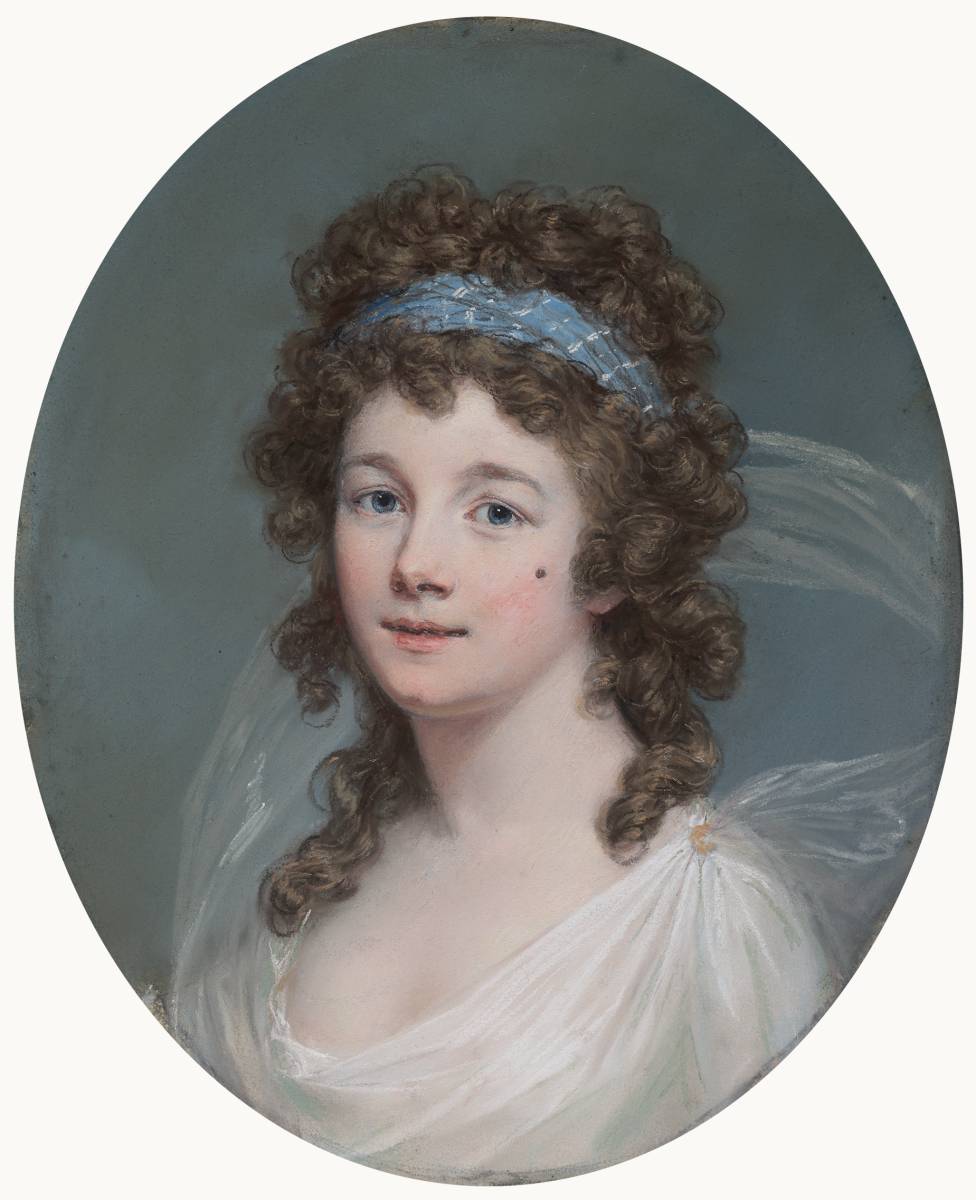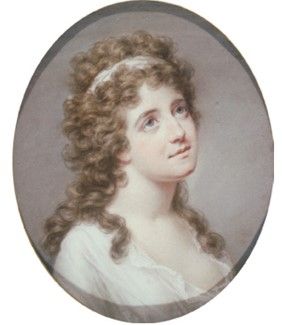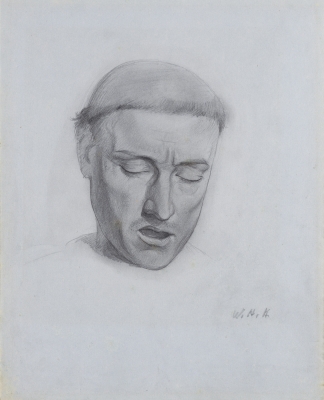This virtuosic pastel was made by Hugh Douglas Hamilton shortly after his return from over a decade’s residence in Italy, when he reestablished himself in Dublin, taking a studio at 20 Frederick Street, later 14 Clare Street. Once he was back in Ireland, as he told his friend and correspondent, Antonio Canova in 1793, Hamilton largely abandoned pastel to work in oil. This exquisite portrait therefore belongs to a small, highly refined group of pastels that Hamilton made of elite Dublin sitters before he turned from pastel to oil. Housed in a frame by Joel Hulbert of 12 Camden Street, Dublin, the pastel can be stylistically associated with a group of portraits of the extended La Touche family that Hamilton made in around 1792.
Hugh Douglas Hamilton was born in Dublin, the son of a wig maker in Crow Street. He entered the Dublin Society School of Drawing about 1750 and studied under Robert West and James Mannin and was a pupil there for some eight years, winning three premiums for the best drawings of 1756. Hamilton probably left West's academy in the late 1750s and soon set up a flourishing business as a portraitist in pastels. Hamilton’s small-scale, intimate pastel portraits were immensely popular. Their popularity rested on a combination of the luminous surface quality he achieved, the speed of execution, portability and low cost. In 1779 he travelled to Italy accompanied by his wife Mary and daughter Harriott. After time spent in Venice and Florence, the Hamiltons settled in Rome where they were at the centre of a cosmopolitan circle of artists, including the sculptors John Flaxman and Antonio Canova.
This unusually animated portrait shows the beautiful young sitter in modish costume, her white, diaphanous drape arranged behind her head; her hair is worn in ringlets and gathered around her head with a blue and white silk bandeau. The pastel itself is handled with remarkable skill. Hamilton has built up the features with minimal blending, refining with sharpened pastel to describe details such as the mole on the sitter’s cheek. Hamilton has captured the sitter in a moment of animation, showing her slightly parted lips as if in mid conversation, it gives a rare kineticism to this unusually refined pastel portrait.
The sitter’s costume and features, as well as Hamilton’s conception recalls his portrait of Lady Cecilia Leeson, the wife of David La Touche IV. Shown wearing the same loose, white cotton chemise, abundant ringlets held in place with a bandeau and housed in identical frames, it is possible that the present portrait depicts her sister. Lady Cecilia Leeson was the daughter of Joseph Leeson, 1st Earl of Milltown from his third wife, Elizabeth French. Her sister, Lady Frances Leeson married another Irish aristocrat, Marcus Beresford, grandson of the 1st Earl of Tyrone in 1791.
The pattern of frame and the distinctive construction of the pastel are identical to documented works of members of the La Touche family, including a pair of portraits of David Digues La Touche III and his wife which retain the trade label for Joel Hulbert of 12 Camden Street, Dublin. In common with the La Touche pastels, the present work is drawn on paper laid down directly onto a wooden backboard, this backboard has then been secured to a metal plate. The metal plate was almost certainly designed to protect the pastel; Hamilton was fastidious in preserving the surface of his pastels from any interference.



